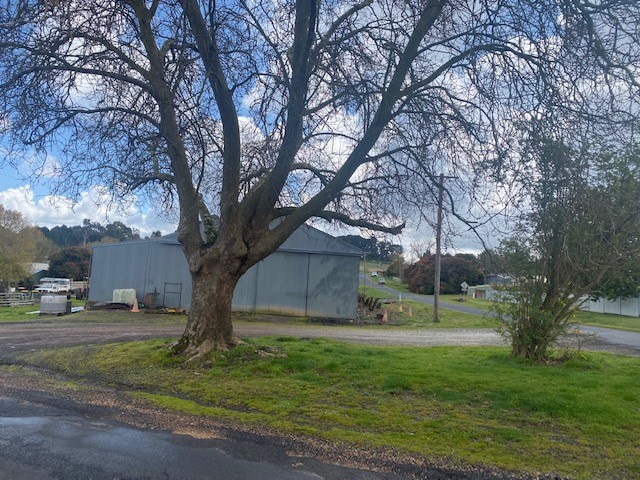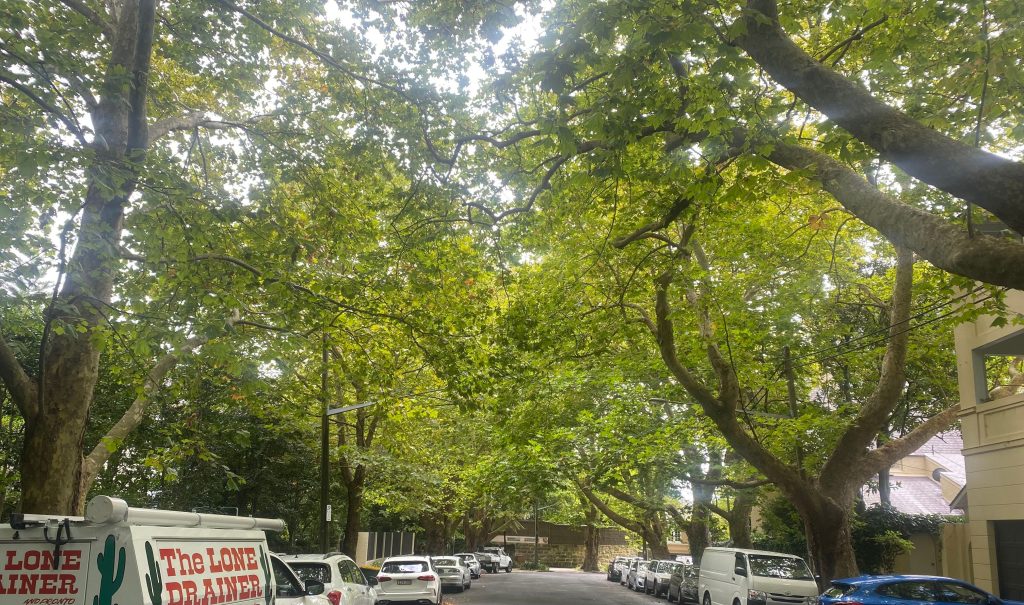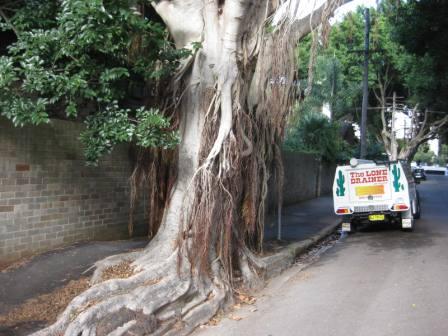Archives
Ode to The Lone Drainer and Pronto
There once was a drain that was blocked, and its contents left me quite shocked.
But fear not my friend, we have tools to amend, our Rattlesnake will leave your drains clear.
With a flick of the wrist and a twist, the Rattlesnake is in the abyss,
As it wriggles and writhes, and the blockage soon dies, leaving your drains as clean as if kissed.
So if you’re in a fix, with a drain that plays tricks, don’t hesitate, cause it’s a NO Brainer,
With our service online, we’ll have your drains cleaned on time, Three cheers for Sydney’s Lone Drainer.

Do deciduous tree roots block drains in winter?
Following on from our previous post, Do tree roots grow in sewer pipes during winter, deciduous trees that shed their leaves during the autumn, generally follow a similar pattern in terms of root growth during winter. However, there are a few additional factors to consider.
Deciduous trees undergo physiological changes in preparation for winter. As the days shorten and temperatures drop, they enter a period of dormancy. During this dormancy phase, metabolic activity slows down, including root growth. Deciduous trees allocate their energy resources towards survival mechanisms and protecting themselves from the cold rather than active growth.

One significant difference with deciduous trees is that they shed their leaves in the autumn. This leaf drop allows the tree to conserve water and energy during winter when resources are limited. Without leaves, the tree doesn’t require as much water and nutrients, reducing the demand on the roots during the dormant period.
While root growth is generally slower or dormant during winter for deciduous trees, some root activity may still occur. Roots continue to function for basic water and nutrient uptake, albeit at a reduced rate compared to the active growing season. According to the arborists I’ve spoken with, the majority of root growth for deciduous trees resumes in the spring, coinciding with the growth of new leaves and the tree’s transition out of dormancy.
So, while there may be slight variations due to leaf drop and dormancy, the overall pattern of reduced root growth during winter applies to both deciduous and evergreen trees.
But remember, tree roots from deciduous trees will still block your drains and if they do, we can help!
Do tree roots grow in sewer pipes during winter?
As we transition into another Sydney winter, my thirst for knowledge about trees and their roots and how and why they grow in sewer pipes and whether they are as active as during the warmer months led me to here.

This magnificent display of London Plane trees in Woollahra was just starting to move into autumn mode and we were called to a blocked drain in the street. The blocked drain was caused by tree roots.
Tree roots generally grow more slowly or become dormant during the winter months. The growth of tree roots in drains is influenced by several factors, including temperature, soil conditions, and moisture availability. In colder climates, where winters are harsh and the ground freezes, root growth is typically limited or even halted.
During winter, the soil temperature drops, making it less favorable for root growth. Additionally, the availability of water is often reduced due to freezing or low precipitation levels. These conditions make it difficult for roots to actively grow and expand. Our seasons are changing but traditionally winter in Sydney is our dry season.
However, it’s important to note that tree roots can still function and absorb some nutrients from sewer pipes and drains during winter and continue to cause blockages albeit at a slower rate. They continue to provide support and anchorage for the tree, even if growth is minimal. I believe they are preparing for the spring while they’re hibernating.
And that’s why we still have to attend to tree root drain blockages during winter.
Root growth typically resumes in the spring when temperatures rise, and the soil becomes more conducive to growth. As the weather warms and soil conditions improve, tree roots become more active, allowing for increased growth and development.
Now if you live north of the NSW and Queensland border this theory would probably be tested because it doesn’t cool down as much as the southern states.
If you live in Australia’s sunny north and have a tale to tell about your blocked drains and tree roots, you can tell it here.
Are you buying a house on a tree lined street? Six things to consider!
If you have your eye on a house in a tree lined street, you should read this!
While street trees can have many benefits, there are also some potential negative impacts that should be considered.
- Damage to the street infrastructure: Street trees can cause damage to footpaths, roads, and buildings if their roots grow too close to or under them. They can also damage underground utilities such as electrical cables, water and gas pipes. The tree root systems will also cause blocked drains and sewer pipes. If you get a blocked drain you should call The Lone Drainer and Pronto.
- Maintenance: Street trees require regular maintenance, such as pruning and watering, to ensure they remain healthy and safe. This can be a significant cost for utility companies, municipalities and homeowners. Radical pruning is used to shape the street trees away from overhead electric power and communication lines.
- Allergies: Some people may have an allergic reaction to certain species of street trees, such as those that produce a lot of pollen.
- Invasive species: Some species of street trees can become invasive, meaning they can spread rapidly and compete with the native species. This can have a negative impact on local ecosystems and biodiversity.
- Canopy closure: Street trees can cause a canopy closure, blocking the sunlight and view, making the street darker and less attractive in the winter months. However, in our hot summer, the shade they provide brings a welcome relief from the heat of the day.
- Your car: Parking your car under a tree like this Hill’s Weeping Fig Ficus microcarpa hillii during certain seasons can be very messy. The fig has berries….. Lots of them. They attract possums, flying foxes and birds that feast on the berries and subsequently make a BIG mess on your car.
It’s important to consider these potential negative impacts when selecting, planting, and maintaining street trees. Proper tree selection, planning, and management can help to minimize these negative impacts and maximize the benefits of street trees.

Five ways street trees affect your home!
If you’re considering buying a home in a tree lined street like this, you need to know how trees can affect houses on the street. Here’s just a few,
-
Property value: Street trees can have a positive impact on property values. Studies have shown that houses with street trees have a higher market value than houses without street trees.
-
Energy efficiency: Street trees can help to reduce energy costs by providing shade and reducing the amount of heat absorbed by houses. This can help to keep houses cooler in the summer and reduce the need for air conditioning.
-
Aesthetics: Street trees can enhance the appearance of a street and contribute to a more pleasant and inviting neighborhood.
-
Environmental benefits: Street trees can help to improve air and water quality, reduce storm water runoff, and provide habitat for wildlife.
- Some species can grow too large and cause damage to the roads, footpaths and sewers and storm water drains of houses or businesses on the street.
It’s important to note that while street trees have many benefits, they also require maintenance and care to ensure they are healthy and safe.
In Sydney Australia, local Councils as the owners, are responsible for maintaining the street trees on their property, including pruning, watering and removing dead branches or fallen leaves, and the maintenance of the blocked drains they cause.
It’s important they select the right species of tree for the location and space available, as some species can grow too large and cause damage to the roads, footpaths and sewers and storm water drains of houses or businesses on the street.
Read our previous posts about street trees and how blocked drains are managed by Randwick Council, Waverley Council and Woollahra Council here.

Tree roots never sleep
Coogee 2034 Sydney, Australia
G’day Sydney
We’re back at work in January 2022!
Our workload didn’t really let up over the Christmas and New Year period because tree roots just keep growing in pipes.
If you are having the same problem with roots in your drains and you are looking for a short-term or long-term solution call me on 1800 637 600
Or check out our site VaporooterAustralia.com.au
There may be a cost-effective solution there for you!
Stop Tree Roots in PVC pipes
Bellevue Hill, Sydney, Australia
This post is a simple one. The house shown here is quite new!
The sewer pipes are also new PVC. But, where the house sewer line joins into the Sydney Water sewer main there are roots from a large Fig tree on the footpath out the front growing into the sewer connection.
We are putting Vaporooter into the pipes to stop tree root regrowth at that single point.
It’s a simple process and I hope you have seen it before.
You can see our equipment on the rock shelf behind and also see the Vaporooter foam coming up through the cap in the footpath.
Even new houses with PVC pipes can get tree roots growing into them.
There is a simple way to Stop tree roots in Drains. It’s Vaporooter!
If you need to find out more about it, Ask me.
Call 1800 637 600
Contact The Lone Drainer and Pronto 02 9664 4990
Or check out VaporooterAustralia.com.au
Blocked Drains…Minimise the Pain
If you have a history of blocked drains at your home, you should read the following to learn more about your drains.
Get a drainage diagram from Sydney Water and keep it handy; it’s part of your contract of sale.
- Tree roots will grow into your sewer, year in year out, through the joints in earthenware pipelines or where they meet PVC pipes. They will come back!
- Don’t ignore gurgling drains or siphoning pan outlets. They are a sure sign of a blockage.
- Investigate smells, they usually mean trouble.
- All plumbing fixtures, WC, basin, sink, bath, laundry tubs, kitchen sink etc. have an S or P trap, or water seal underneath. This trap is not to catch your diamonds (which we have successfully retrieved in the past), it is there to prevent the smell of the sewer coming into your home. If you have a bad smell in the bathroom or laundry it may be because the water seal in the floorwaste has dried out. This means the floorwaste is acting as a direct vent off the sewer and that’s why it smells. So an easy fix is to get a torch and see if the floorwaste is dry; if it is, get a bucket or jug of water, add disinfectant or bleach and tip it in. If the smell persists, it’s a job for the Lone Drainer and Pronto!
- Remove hair from your shower or bath drains. Bin it, burn it or flush it.
- Keep a simple sink plunger in your home tool kit.
- Don’t put sanitary products (tampons, napkins etc) or dental floss down the loo. Dental floss is like fishing line, very tough, it wont break down, it will cause a blockage!
- Only use toilet paper. Not tissues or newspaper. (Try the tissue-toilet paper test. Put them in a bucket and run water over them. See what happens).
- Toilet deodorisers that hang over the edge of your loo are not recommended! They fall in and no one wants to put gloves on and retrieve them, so they flush them down and guess what? They will help put a plumbers kid through uni!
- If you do hire an electric eel and try to clear a blockage yourself, exercise caution, they are a dangerous weapon in the hands of a novice and may cost you more money than you save!
If you need any help with this go to https://www.thelonedrainerandpronto.com.au/blocked-drains.html
Symptoms of a Blocked Drain
As Easter approaches we make plans to get together with our family and friends, so there is constant use of kitchen and bathroom facilities. To make the holiday break memorable and keep an eye out for some of those vital symptoms that might indicate you have a slow or blocked drain rather than having to call an emergency plumber to rescue you and your family from a blockage.
Keep an eye out for the following:
- The excessive rise or fall of the water level in your toilet. We call it syphoning, and it comes with a Glug Glug Glug.
- Slow draining water or ankle deep water in the shower or bath.
- Swarms of small flies or sewer flies around smelly drains.
- Your kitchen sink, waste disposal unit or dishwasher are slow to drain.
- Toilet paper or dirty water around your sewer surcharge gully in the garden or yard.
- Dirty water leaking from a retaining wall or garden bed that conceals sewer pipes.
These are signs of a blockage, and your pipes have been trying to tell you, that all isn’t well.
Because you have extra guests using the facilities, if there is a problems in your pipes it may likely show signs then that you are able to pick up.
So have a look around you home for the symptoms and please do not ignore them.
Have a peaceful Easter.
I hope the Easter Bunny comes!
